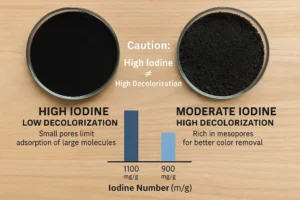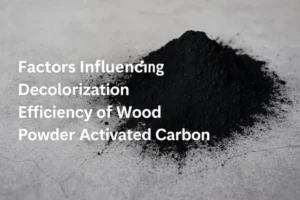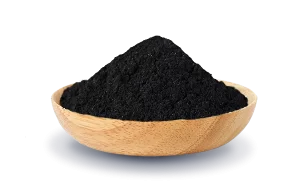Lactose refining is a critical step in the production of high-purity disaccharide sugar from whey, especially when intended for pharmaceutical and infant nutrition applications. Regulatory bodies such as the USP, EP, and FCC require strict limits on residual color, heavy metals, odor, and organic impurities. As such, wood-based powdered activated carbon has become an industry-standard purification material due to its superior adsorption performance and food/pharma-grade safety profile.
Challenges in Raw Lactose Streams
During ultrafiltration and crystallization of whey-derived lactose, the intermediate solutions may still contain:
- Maillard reaction by-products (e.g., melanoidins, furfurals) that impart yellow or brown tint
- Residual peptides or proteins contributing to turbidity and foam
- Volatile organic acids and odoriferous aldehydes
- Traces of fat-soluble compounds, including carotenoids or oxidized lipids
These impurities not only affect appearance and sensory characteristics but may also impact lactose’s compressibility and flow properties during tableting or blending in final dosage forms.
Why Choose Wood-Based Activated Carbon?
Compared to bone char or mineral-based carbons, wood-based activated carbon provides the following technical advantages in lactose refining:
- High surface area: >1000 m2/g, primarily microporous and mesoporous structure
- Rapid adsorption kinetics: fine particle size (typically 200–325 mesh) offers fast dispersion and contact
- Low ash and heavy metals: critical for EP/USP grade lactose compliance
- High purity: acid-washed, low-dust carbon ensures minimal contamination and easy downstream filtration
Typical Processing Conditions
Activated carbon treatment is integrated between concentration and crystallization steps. Best performance is typically achieved under the following conditions:
| Parameter | Recommended Range |
|---|---|
| Carbon dosage | 0.1%–0.3% w/v |
| Contact time | 15–30 minutes (with agitation) |
| Operating pH | 5.5 – 6.2 |
| Temperature | 40–60°C (higher temperature increases diffusion rate) |
| Filtration method | Pressure filter / precoat filtration / decanter centrifuge |
Performance Targets
Wood-based activated carbon enables refined lactose to meet target specifications such as:
- Color reduction: Achieve whiteness index ≥95 (e.g., L* > 96 in CIE Lab scale)
- Odor elimination: Reduce volatile aldehydes below 0.5 ppm
- Organic impurity adsorption: Remove 90–95% of melanoidins within 20 minutes
HANYAN’s Expertise in Lactose Purification
At HANYAN, we provide wood-based powdered activated carbon with consistent pore structure and stringent quality control, tailored specifically for dairy and nutraceutical purification. Our products meet food additive regulations, and are available in both standard and low-conductivity grades for high-sensitivity applications.
Contact us to request technical data sheets, MSDS, or product samples tailored for your lactose refining process.
Article Keywords: lactose refining, activated carbon for whey, wood-based activated carbon, lactose decolorization, pharma-grade lactose, melanoidin removal, odor adsorption, EP-compliant carbon, food-grade activated carbon, activated carbon for lactose



